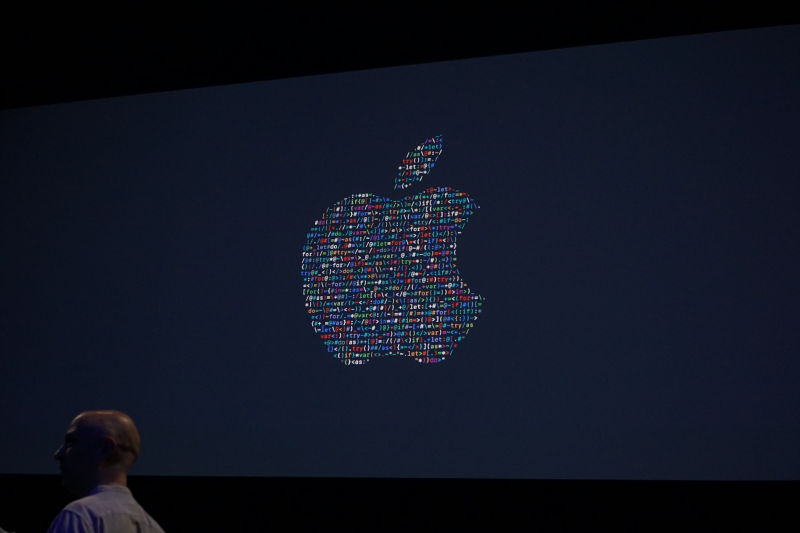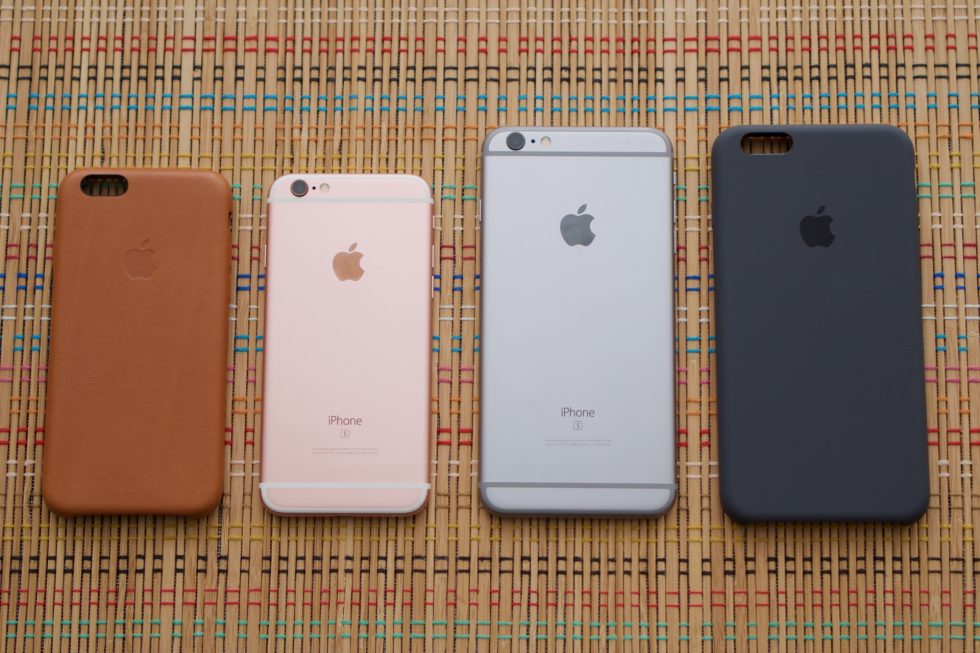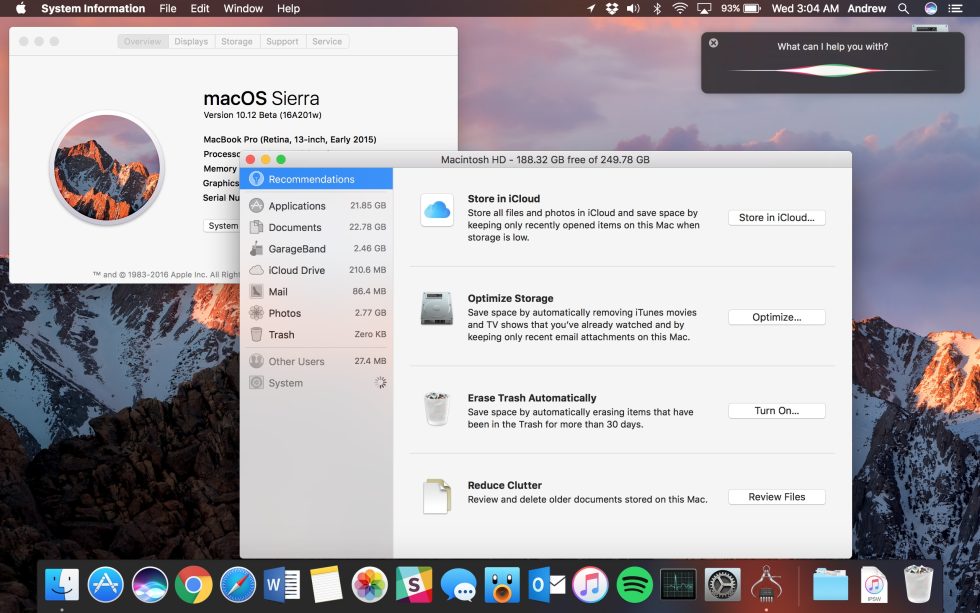
Apple’s big September product presentation is happening on Wednesday—WWDC in June is when we find out about software, but when it comes to the hardware that the company makes most of its money from, September is Apple’s biggest event of the year.
Last year’s event was especially huge and wide-ranging. Apple launched its new tvOS platform, tweaked the hardware and software of the still-new Apple Watch, introduced the iPad Pro and the iPhone 6S series, and provided software updates for everything across all of its product lines. Wednesday will still be a busy day, but relatively speaking it ought to be quieter.
The iPhone

Most rumors still call the next iPhone the “iPhone 7,” but unlike past years it doesn’t sound like the latest model will get a big external redesign. Expect this to look a lot like the current 6 and 6S design, but with tweaked or removed antenna cutouts to give the back of the phone a cleaner look. The new phone will still come in two sizes, one 4.7-inch version and one 5.5-inch version.
Otherwise we can expect changes on par with what we usually see in “S” model, which usually means a newer, faster processor, a better camera, and a handful of other hardware-driven improvements. Reports from earlier this year also suggested that the 16GB base model could be going away, something we’ve been requesting for a while now.
The camera could be particularly interesting. The larger of the two phones (let’s call it the “iPhone 7 Plus” for brevity’s sake) is said to include two rear camera lenses, which are said to be set to different focal lengths to simulate true optical zoom and are also said to boast improved low-light performance. The Plus phones have always had slightly better cameras than their smaller non-Plus counterparts, but previously the difference was just that the Pluses featured optical image stabilization (OIS) hardware. A second camera lens would be a more significant way to differentiate the two (and, possibly, to drive more sales of the more expensive Plus models).
Also rumored is a new pressure-sensitive Home button, which like the Force Touch trackpads on newer MacBooks simulates clicks using vibrations instead of actually clicking. This could cut down on repairs since there would be fewer moving parts, and it could also get Apple a few precious millimeters inside the body of the iPhone that could be used for more battery, other components, or just to make the phone thinner (an eternal ambition of Apple’s).
And then there’s the elephant in the room: the headphone jack. Or, rather, the potential lack of one. Apple is said to be abandoning the port in favor of a second speaker or microphone at the bottom of the phone. The duties of the standard 3.5mm headphone jack will be handled by either the Lightning port, Bluetooth, or both. None of the rumors can agree on what Apple will ship with the iPhone instead of those 3.5mm earbuds, but it will be one of those two options.
Apple enthusiasts have preemptively declared that getting rid of the headphone jack is the same as getting rid of the floppy drive or optical drive—a momentarily painful transition that will work out for the best in the long run. I suspect it will be more complicated than that, and while I’m willing to withhold final judgment until I’ve actually tried whatever Apple’s solution is, it’s on Apple to communicate why the removal of the headphone jack is progress and not just change-for-the-sake-of-change.
A new Apple Watch

The most reliable rumors say that Apple will introduce a second-generation Apple Watch at this event, its first true refresh since the original was introduced last spring.
What we know about the new version can be summed up in a handful of words: faster with a GPS. We’re at the point in the Apple Watch’s life where speed improvements are reason enough to upgrade all by themselves, but a built-in GPS will be useful for those who use their watches as jogging or biking companions and don’t want to take their iPhones along with them every time they want to exercise. The current model uses the GPS in your iPhone when it can, but switches to less accurate readings based on its internal sensors when untethered.
Though Apple is said to be planning a future version of the watch with LTE support, battery concerns are still keeping it out of the next-generation version of the watch. For internet connectivity, plan on keeping your phone around. And while I haven't read anything specifically about band compatibility, I think it's a sure bet that existing Apple Watch bands (and any new bands Apple introduces with the next model) will remain compatible with the latest one.
Macs? Possible, not likely
The good news is that we’ve been seeing plenty of rumors about new Macs for a while now, including a redesigned MacBook Pro with an OLED touchscreen bar across the top of the keyboard instead of traditional function keys. The CPUs, GPUs, SSDs, and other components that Apple would need to update nearly every single Mac in the lineup are all available, including new Kaby Lake processors for the MacBook that was updated back in April.
Aside from the MacBook Pro, the hardware in the most dire need of an update is the MacBook Air, the Mac Mini, and the Mac Pro. I’ve suspected that the MacBook Air, which was last redesigned in 2010, would be retired, replaced by the Retina MacBook at the low-end and a thinner, lighter 13-inch MacBook Pro at the high-end. But the Air reportedly has at least one more refresh left in it, and Bloomberg says that said refresh could include USB Type-C.
But rumors say not to expect Macs next Wednesday, since Apple will be focusing mostly on its other, newer products. We may get a quick Sierra recap if there's time, but hardware is expected in October at the earliest.
If true, it would mean that Apple has gone a full year-and-a-half without updating Mac hardware on stage at a product event. The major refreshes that have happened since the original MacBook was announced in March of 2015 (new iMacs In October of that year, the aforementioned MacBook refresh in April 2016) have happened quietly with press releases and review embargoes. That behavior would seem odd for a full redesign rather than a straightforward internal refresh, but it's the most likely outcome if we don't see new hardware this week.
iPads? Possible, but less likely for the Pros
The iPad Pro is the future of the lineup, and it’s in an awkward spot right now. The 12.9-inch model is a year old and thus ripe for new hardware, but the similar 9.7-inch model is only about six months old. No rumors point to an imminent refresh for the iPad Pro line. A Bloomberg report that says Apple is working on an iPad-focused update for iOS next year (whether as an update to iOS 10 or a part of iOS 11 isn’t made clear) also cites an analyst note that claims a new 10.5-inch iPad Pro will be introduced next year.
That doesn’t mean we won’t see anything new, though. The iPad Mini 4 is also nearly a year old and the iPad Air 2 is nearing its second birthday, and stock of the latter tablet is drying up at major retailers. We could still get some price changes or minor refreshes at the low end to shore up the tablet’s sales while we wait for Apple to make bigger changes on the Pro side of the lineup.
Software updates

This much is certain: We will get release dates for iOS 10, macOS Sierra, watchOS 3, and tvOS 10 at this event, and some of the updates may actually be released on September 7.
Of those four releases, tvOS 10 is the least noteworthy. It introduces a Night Mode version of the UI, makes signing into various apps much easier, and adds a few new toys for developers, but it’s not drastically different from what you’re using now.
WatchOS 3 is more impressive. It changes some things about how the basic UI interactions work, makes messaging faster and more versatile, and automatically loads up to 10 apps you choose into memory to make them all faster to access. New hardware will be great if it comes, but this update should also treat current-generation hardware pretty well.
Sierra, now called macOS instead of OS X, is a relatively small update for Apple’s most mature platform. Siri is its biggest addition, but it also features some iCloud additions to help save you some disk space, security enhancements, and Apple Watch unlocking for those of you with newer (read: post-2013) hardware. Just make sure you’ve got a new enough Mac to run it, since Sierra drops some older hardware for the first time in several years.
And finally, iOS 10 is a wide-ranging update with a lot of new changes. Notifications have been revamped, as has the lock screen and the Today View. New APIs like SiriKit and CallKit will give app developers hooks into the operating system that they’ve never had before. And apps all over the OS have been tweaked with changes large and small. It doesn’t have as much for iPad users as iOS 9 did, but it’s still shaping up to be a solid update.
We’ll be reviewing each of these operating systems individually as they are released. Last year, they were all out by the end of September, and I’d expect that to happen again this year as well.
reader comments
115